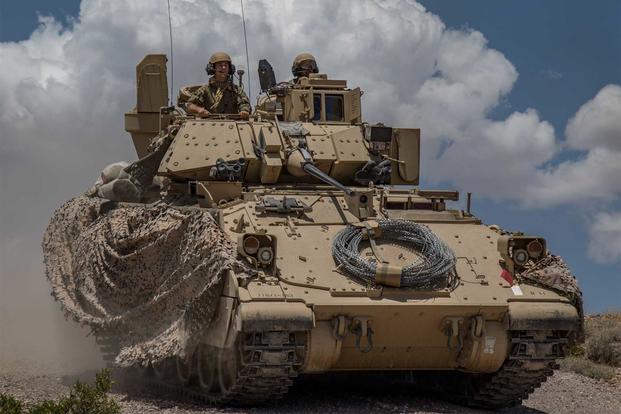
The Army will soon start testing a Lockheed Martin anti-missile defense system designed to work with the service’s M1 tanks and Bradley and Stryker armored vehicles.
Under a three-year agreement announced Tuesday, Lockheed will provide its Modular Active Protection System, or MAPS, base kit, which includes a framework of vehicle sensors and countermeasures designed to detect, track and destroy rocket-propelled grenades and anti-tank guided missiles, according to a company news release.
This is the latest step in the Army’s decade-long quest to protect its armored vehicle crews without adding extra armor, which increases vehicle weight and degrades speed and mobility.
Lockheed began working with the Army to develop its MAPS technology in 2014.
“Since then, the MAPS base kit has proven itself in multiple live-fire demonstrations,” said David Rohall, program manager for Advanced Ground Vehicle Systems at Lockheed Martin. “We’re ready to support integration and testing on a variety of Army combat vehicles, the final step before the Army makes a formal decision on fielding this capability.”
The service has been searching for an active protection system for more than 10 years. It selected the Quick Kill APS, made by Raytheon Co., to equip its manned ground vehicles under the Future Combat Systems program. The effort died, however, when then-Defense Secretary Robert Gates canceled FCS in 2009 — the same year the Israel Defense Forces fielded the first Trophy APS systems.
The Army launched an accelerated effort in early 2017 to equip its M1 tanks, Bradley fighting vehicles and Strykers with commercially available active protection devices such as the Trophy system.
The Army agreed to equip four brigade combat teams’ worth of M1 tanks with the Trophy system and has tested the Israeli APS system, known as Iron Fist, to protect the Bradley.
Equipping the lightly armored Stryker with APS has proven more challenging, Army officials told Congress in March. The APS systems the Army tested could defeat an incoming missile, but it was difficult to prevent the secondary effects of the destroyed enemy rocket from penetrating the vehicle.
Under the new agreement, Lockheed Martin will deliver five production-ready base kits with an option for up to 20, and support Army integration and testing on Abrams tanks, the new Armored Multi-Purpose Vehicle, and Bradley and Stryker vehicles. The contract also covers developing the base kit for vehicle protection capabilities beyond active protection, such as underbelly blast protection, according to the release.
Source: Military News



